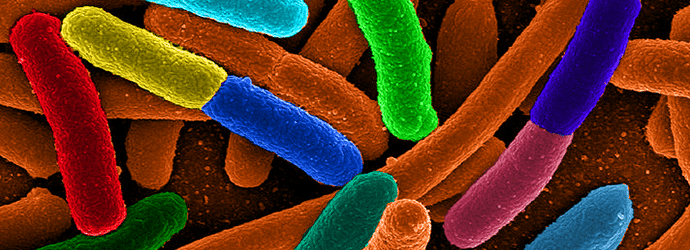Imprecise Cell Counts May Be Holding Back Your Research
If you’ve worked in a cell research lab longer than a week, you’ll have learnt the basics of cell culture. And after a few months in the lab, you know a lot about passaging cells, selecting the right media, and maintaining healthy populations to support great science … right?
It’s easy to take cell culture for granted. It just seems like it should be simple. But keeping cells healthy over long periods of time is a lot more challenging than it looks.
And here’s the often overlooked problem: a large proportion of experimental failures can be traced back to cultured cell populations that weren’t as healthy as they appeared.
The hidden issues in these cultures often have a domino effect, causing inconsistent or disappointing results, canceled experiments, or delayed collaborations with core labs.
Ultimately, they add up, setting back research teams by days, weeks, or even months.
Keeping your cultures healthy involves quantifying how well your cells are growing. Knowing how to calculate cell proliferation rates accurately can make the difference between reproducible results and recurring frustration.
Until recently, there hasn’t been much innovation in tools or resources to help scientists monitor their cultures more precisely.
That’s now changing. A new ASTM International standard offers clearer guidance on calculating cell proliferation rates, and free online calculators can make routine monitoring more accurate and reproducible.
In this article, you’ll learn the relevance of the ASTM standard and explore the use of an online calculator so you can build cell culture health checks into your workflows.
Cell Health by Guesstimate Is a Bad Idea
The most reliable way to ensure the health of a cell stock is to count cells precisely with every passage to calculate the cell proliferation rate. While this is the gold standard method, it is also painfully tedious and time-consuming.
If you are maintaining many cell stocks, the burden of that process is compounded. All of that time spent counting and calculating chips away at the time available to conduct real science.
Even the most dedicated researchers often abandon this practice, opting instead for a quick “by-eye” estimate. One common shortcut is to log the days between passages and time to confluency, then infer proliferation rates and other metrics from those observations.
When every culture seems to be growing happily, this feels like a safe bet.
Unfortunately, this approach can easily miss subtle shifts in cell health that would be obvious with precise counts. A slightly slower time to confluency may go unnoticed by eye, but jumps out in quantitative data — and is often the first warning sign of declining health. Missing it can jeopardize the next several rounds of experiments.
So how you count matters but so does what you count.
Many researchers who do perform careful cell counts at each passage do so on proxy replicates, instead of the experimental culture itself, to avoid disruption.
That’s understandable but also risky! Counting a proxy population to infer the health of another introduces variability.
So to sum up, for reliable results, the best approach is to precisely count the actual cultures you plan to use in experiments. That way you will always have a firm grasp that will enable you to detect changes in the health of your cultures.
Recommended Procedures for Cell Monitoring
Passaging or splitting cells is routine in any lab. As populations expand and deplete their nutrients, they must be transferred to new vessels. But this process—sometimes performed every other day depending on the cell type—is also the perfect moment to assess culture health.
Before transferring cells, phase contrast microscopy can be used to confirm whether cell numbers have increased since the last passage and reveal the proportion of dead or floating cells. Skilled users can distinguish live from dead cells by morphology: live adherent cells stay spread and attached, while dead cells round up and detach.
Phase microscopy also supports two quantitative assessments.
- Mitotic index: the frequency of cells observed in division, a direct reflection of proliferation rate.
- Direct cell counts: obtained by placing a small sample on a counting slide or into an automated cell counter.
By comparing direct cell counts across passages, you can calculate the cell proliferation rate; the number of times the population has doubled during the interval. This single value is the most informative measure of culture health.
A declining proliferation rate often signals culture senescence. The cumulative population doubling curve, representing the total number of doublings over time, is widely used in cancer and aging studies, toxicology, and drug development for this reason.
New Resources for Cell Counting
While benchtop counting methods haven’t changed much in years, there has been recent progress toward more standardized, reproducible monitoring.
A Central International Standard
In early 2025, ASTM International released the F3716 standard, providing clear guidance for calculating and comparing cell proliferation rates in serially maintained cultures of human or animal cells. This standard can be applied across academia, biopharma, regenerative medicine, cultured foods, and biomanufacturing. It represents an important step toward improving reproducibility and data confidence across the life sciences.
The same group of scientists is already developing a follow-up standard to codify best practices for differential stem cell counting, ensuring that emerging stem cell assays can achieve similar precision.
Cell Proliferation Rate Calculator
In parallel, freely available online calculators now help scientists quantify proliferation rates such as population doubling time and cumulative population doublings with minimal effort. These tools work for both general cell cultures and differential stem cell assays, using input data like cell number and time between passages to automatically calculate results.
For stem cell metrics, the calculators use kinetic simulation models based on division dynamics rather than biomarkers or imaging, reducing variability. They’re available with free registration and can be reused indefinitely—helping to remove guesswork from day-to-day culture management and improving accuracy at every passage.
What’s Next
Manual counting will never be the most inspiring part of lab work—but it remains essential for scientific reliability. Fortunately, new tools are making it easier.
Asymmetrex, provider of free online calculators for tracking cell proliferation rates, is developing an automated instrument to streamline the maintenance of serial stock cell cultures. The instrument will integrate quantitative monitoring, apply the ASTM F3716 standard, and support both general and tissue stem cells. It will assess parameters such as viability, self-renewal rate, and cell cycle time. Launch is anticipated in 2026.
Until then, you can immediately adopt the ASTM standard and use online calculators that show you how to calculate cell proliferation rate step-by-step, strengthening your monitoring routines and ensuring that each experiment starts with a truly healthy culture.
Precise counting may be tedious, but skipping it costs far more in lost time, failed experiments, and uncertain results.








